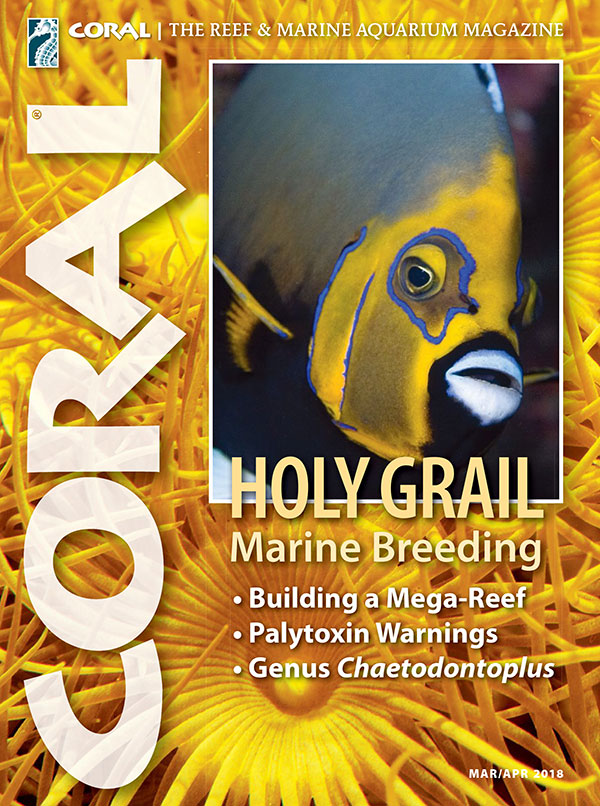
The cover of CORAL Magazine Volume 15, Issue 2 – HOLY GRAIL MARINE BREEDING – March/April 2018. On the cover: the highly coveted Conspicuous Angelfish, Chaetodontoplus conspiculatus, photographed in the wild by Frank Baensch. In the background, Yellow Zoanthid Polyps, photographed by Daniel Knop.
CORAL Magazine’s annual look at the world of marine aquarium-fish breeding returns in our March/April issue, HOLY GRAIL Marine Breeding, with additional cover stories including building a mega reef tank and a fresh look at palytoxin. The magazine is printed and on its way to subscribers, local aquarium shops, and select bookstores—on sale March 6th, 2018, at the best marine aquarium retail stores and leading Barnes & Noble stores everywhere.
Readers of the Digital Edition can log in now: CORAL DIGITAL EDITION
Paid subscribers can log in with their email addresses for instant access. The CORAL Digital version is available for desktop and laptop computers, as well as smartphones, tablets, and Kindle readers. To gain access to the current issue and a deep archive of back issues, become a subscriber by following this link:
SUBSCRIBE & SAVE
SUBSCRIBE and don’t miss this big issue—just $37 per year.
HEREWITH, a sampling of articles and opening pages for readers curious about what the issue will bring.
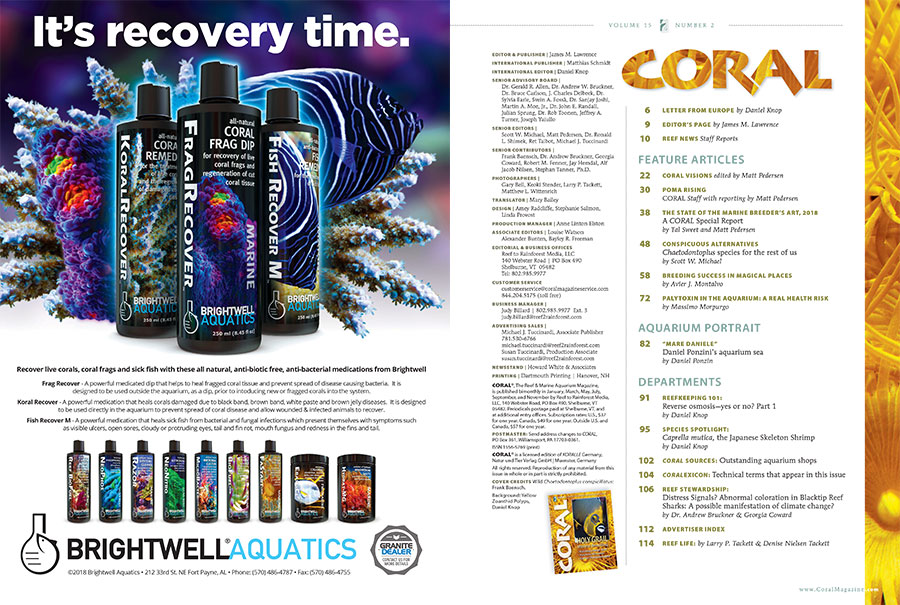
The Table of Contents for the March/April 2018 edition of CORAL Magazine, HOLY GRAIL Marine Breeding. You can view an online copy of the Table of Contents here.
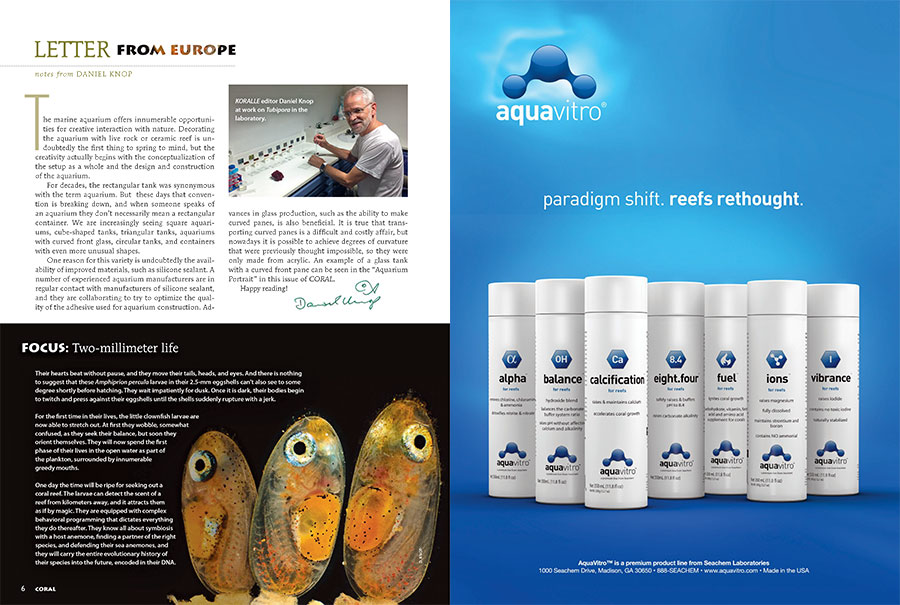
Daniel Knop discusses the evolution of the aquarium from simple rectangular container to complex configurations formerly not considered possible. Find out what’s driven this evolution in his Letter from Europe.
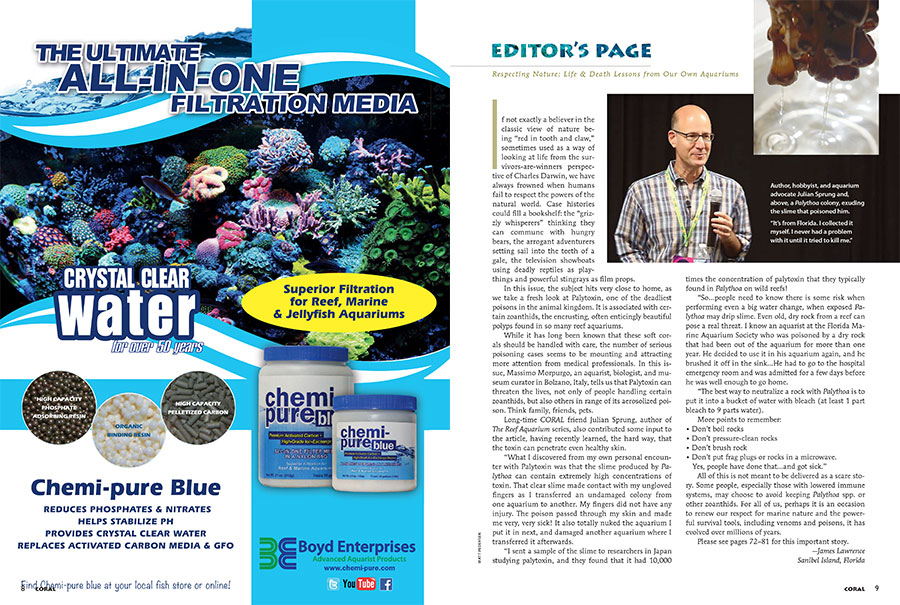
“In this issue,” writes CORAL publisher James Lawrence, “…we take a fresh look at Palytoxin, one of the deadliest poisons in the animal kingdom.” Veteran aquarist Julian Sprung reveals that even the most experienced among us are not immune.
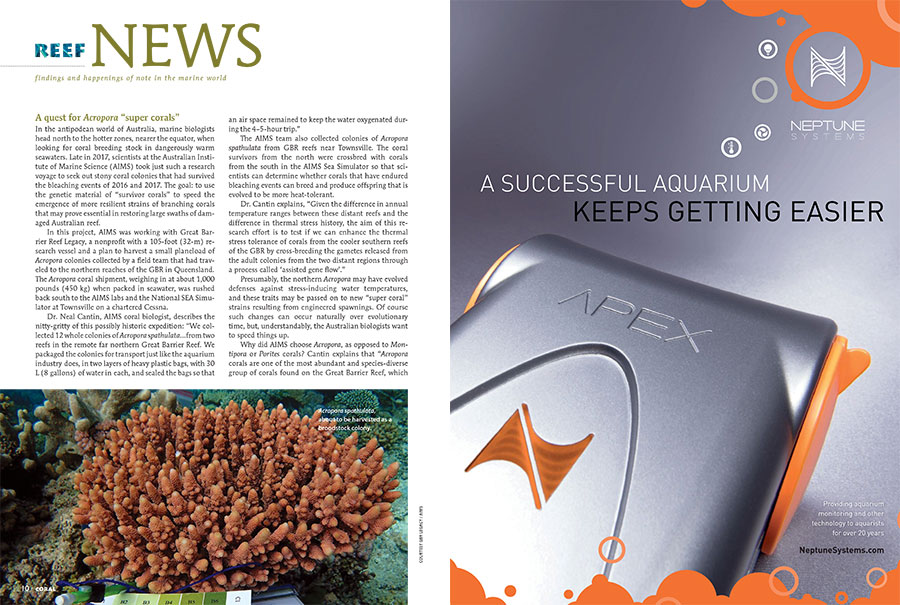
A quest for Acropora “super corals,” how bacteria aid digestion in Red Sea surgeonfishes, mathematically predisposed cutttlefish, the odd intersection of jellyfish protein and lasers, and a new genus of protozoa aptly named Cafeteria: all stories in the newest edition of CORAL Magazine’s Reef News.
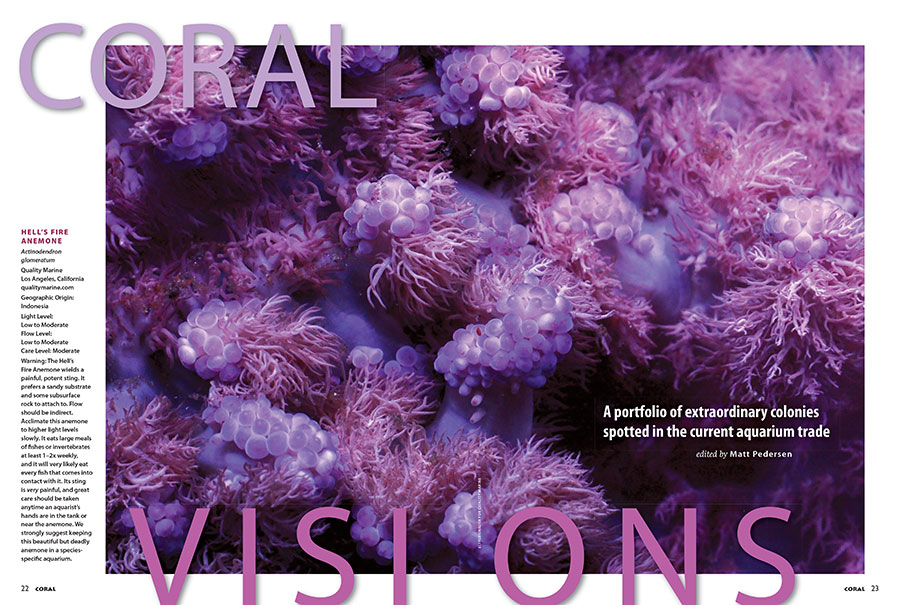
What is this stunning purple cnidarian, photographed by Eli Fleishauer of Quality Marine, which opens this issue’s Coral Visions column? You’ll have to click to enlarge this image or read the newest issue to find out!
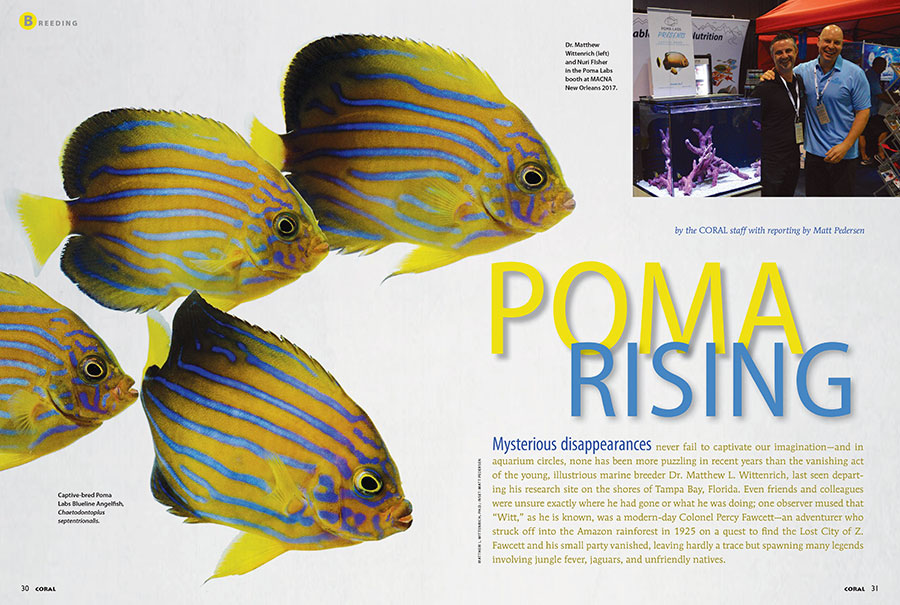
Their captive-bred Conspicuous Angelfish stunned MACNA attendees in 2017. Now, in the CORAL Magazine exclusive report, “Poma Rising,” Dr. Matthew L. Wittenrich and Nuri Fisher of Poma Labs explain how they kept their project a secret for nearly half a decade.
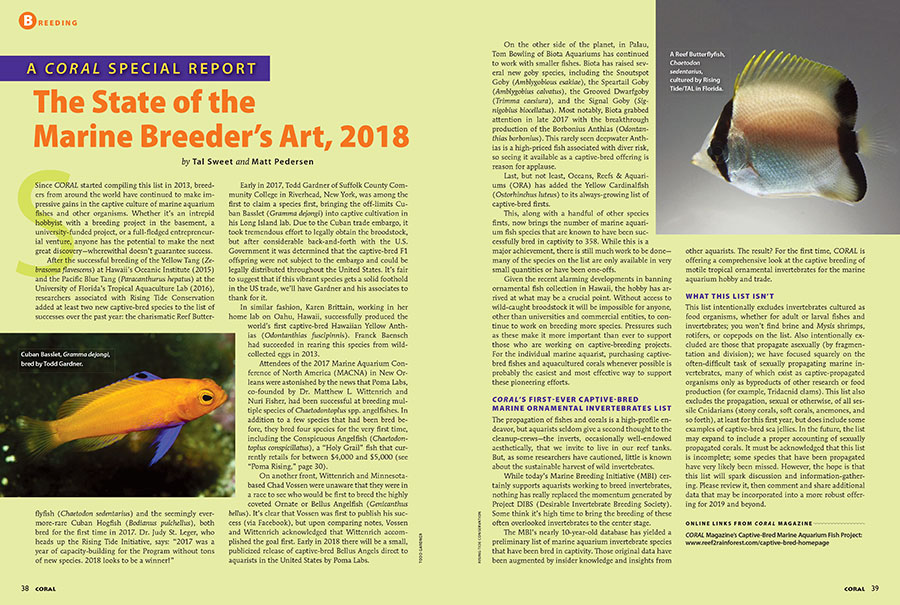
CORAL’s annual State of the Marine Breeder’s Art report, 2018 edition, returns with several exciting additions. Tal Sweet and Matt Pedersen from the Marine Breeding Initiative once again take stock of marine ornamental fish breeding, with a new twist: we’re excited to introduce the first attempted compilation of a captive-bred marine ornamental invertebrate species list.
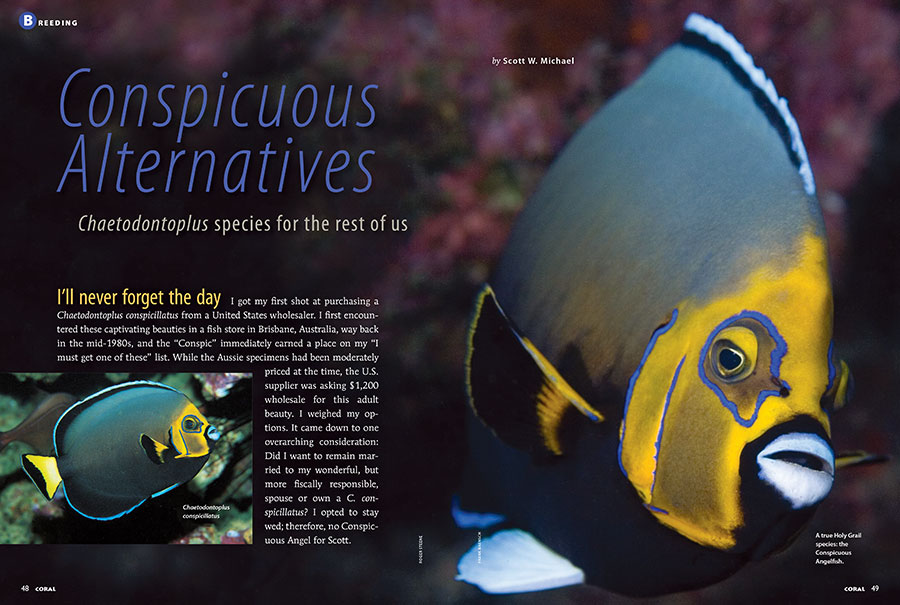
Not everyone can afford a Conspicuous Angelfish, captive-bred or otherwise. Thankfully, Scott W. Michael presents Chaetodontoplus species for the rest of us in his latest contribution, “Conspicuous Alternatives.”
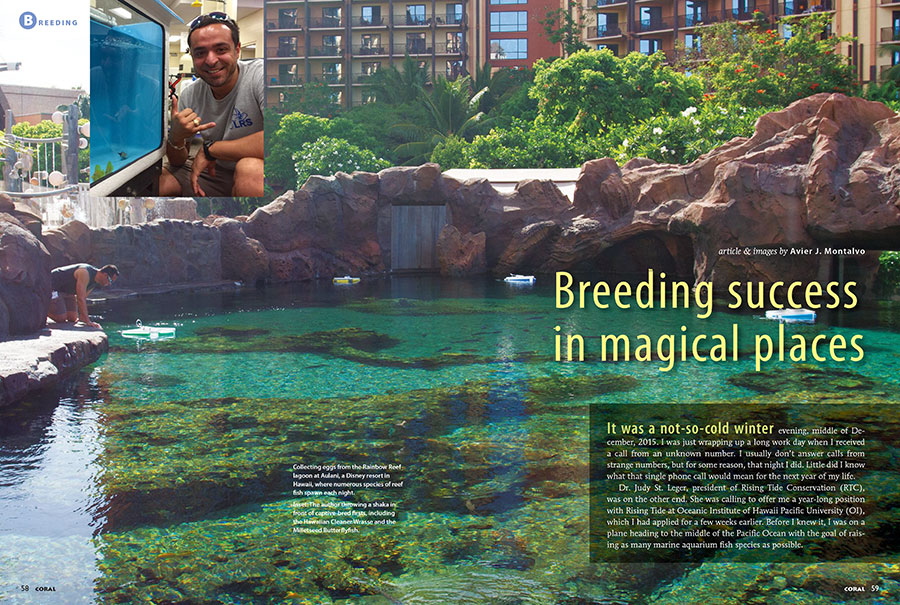
After researchers at the Oceanic Institute bred Yellow Tangs, a flurry of captive-breeding species firsts burst forth from the lab: Milletseed Butterflyfish, Potter’s Angelfish, Hawaiian Cleaner Wrasse, and–officially published for the first time ever–the Longnose Butterflyfish, Forcipiger flavissimus! The man behind these accomplishments, Rising Tide’s Avier J. Montalvo, is now able to tell all in this astounding CORAL Magazine exclusive, “Breeding success in magical places.”
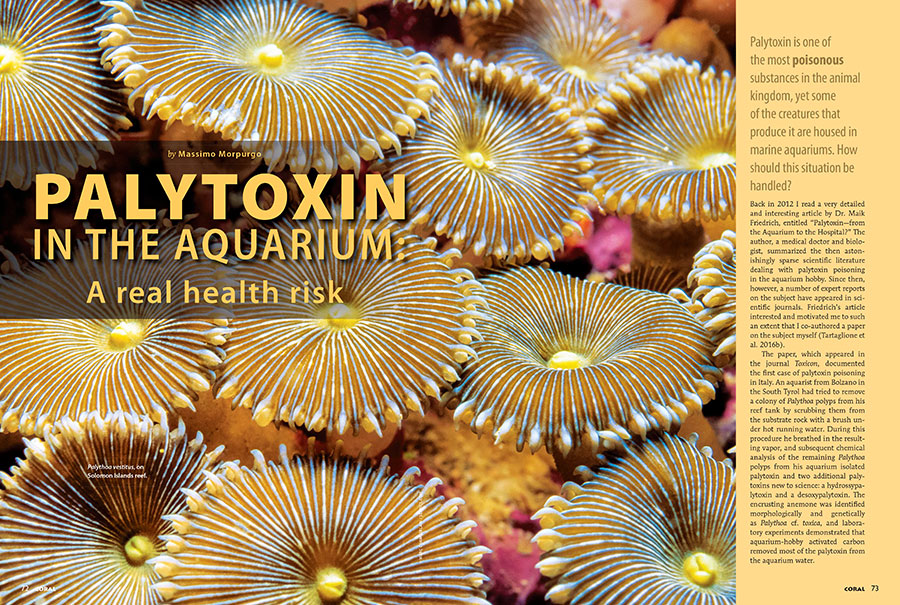
Palytoxin is one of the most poisonous substances in the animal kingdom, yet some of the creatures that produce it are housed in marine aquariums. How should this situation be handled? Italian biologist Massimo Morpurgo gives you the answers in “Palytoxin in the Aquarium: A real health risk.”
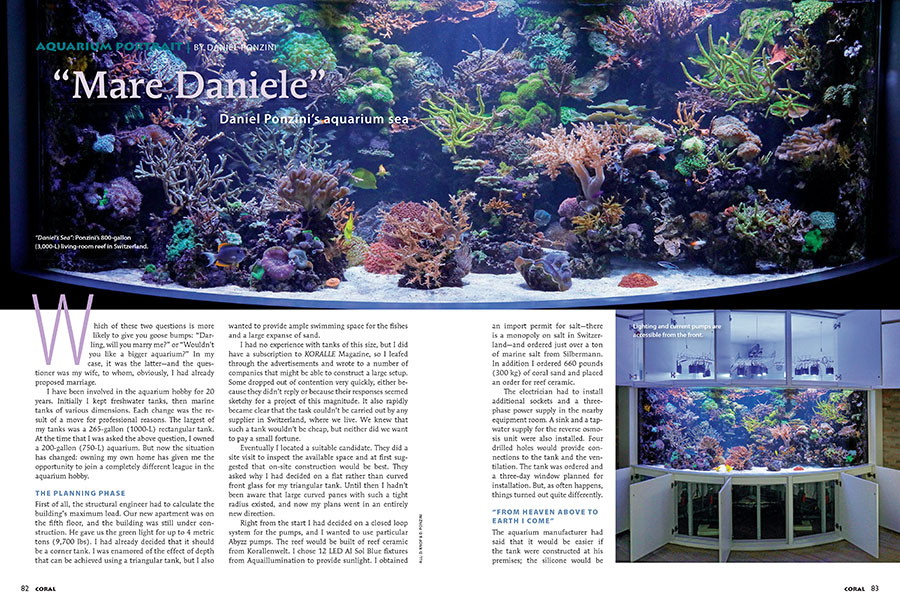
What exactly does the installation and maintenance of an 800-gallon aquarium entail? Find out in “Mare Daniele,” the story of Daniel Ponzini’s Swiss aquarium, our latest Aquarium Portrait.

Most marine aquarists use a reverse osmosis unit, yet some manage without. Does the beginner need to acquire one? Daniel Knop examines that question in the latest installment of our Reefkeeping 101 column.
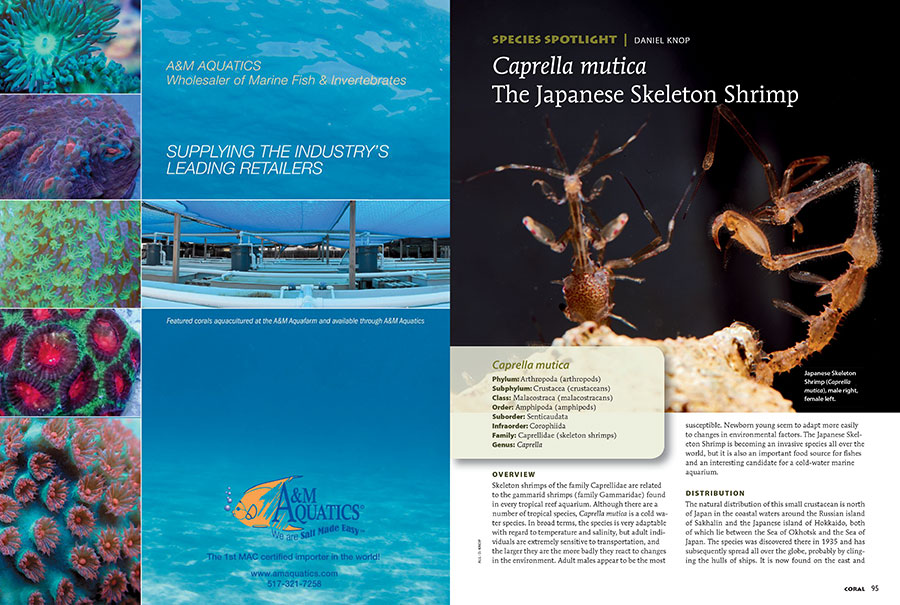
Creepy! Learn all about the cool(-water) Japanese Skeleton Shrimp, Caprella mutica, in our Species Spotlight. It turns out that this tiny invertebrate is invading waters around the globe.
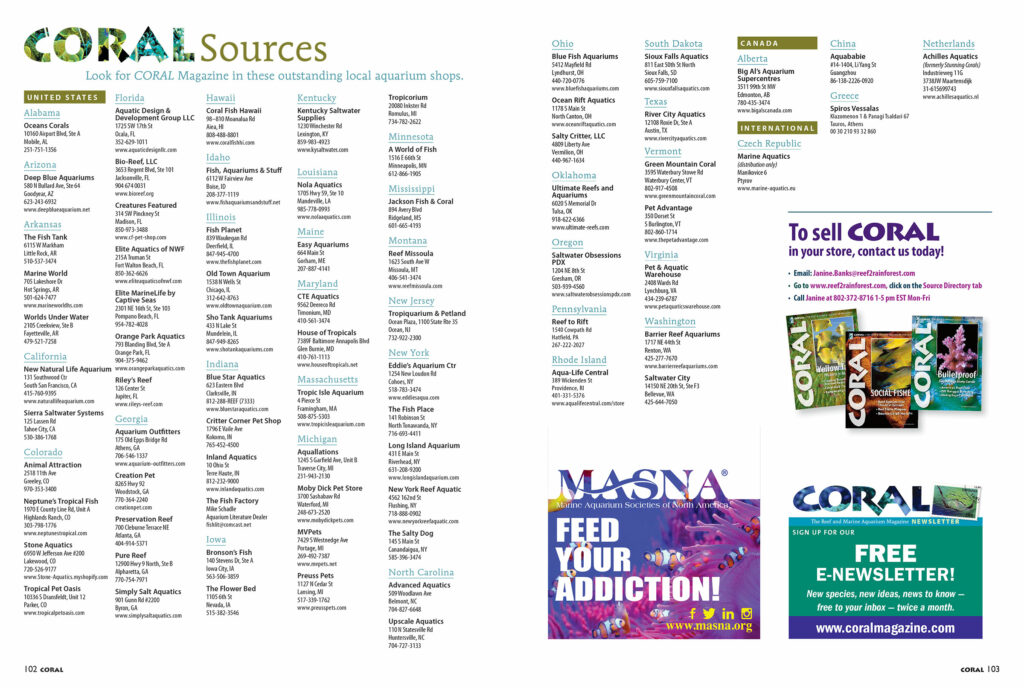
Find CORAL Magazine for sale as single issues at the VERY BEST aquarium retailers. Our sources list is always available online, which is handy when you’re looking for a new local fish shop in your area!
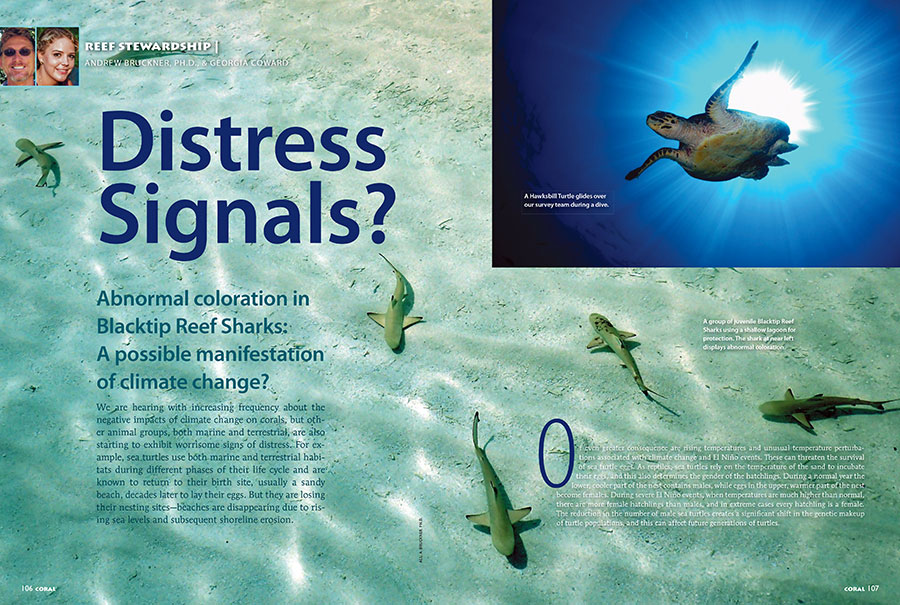
Dr. Andrew Bruckner and Georgia Coward of Coral Reef CPR close out our issue with the latest Reef Stewardship installment: “Distress Signals?” Are elevated water temperatures (components of climate change) responsible for abnormal color pattern development in Blacktip Reef Sharks?!
• Already a subscriber? ACCESS the issue now!
CORAL Subscribers can log in with their email address and read the Digital Edition and App Editions immediately.
• SUBSCRIBE and never miss an issue of CORAL. Paid subscribers receive the classic Print Edition, as well as Free Access to the Digital Edition and CORAL Apps for mobile devices—via iTunes, Google Play for Android devices and the Amazon Kindle store.




